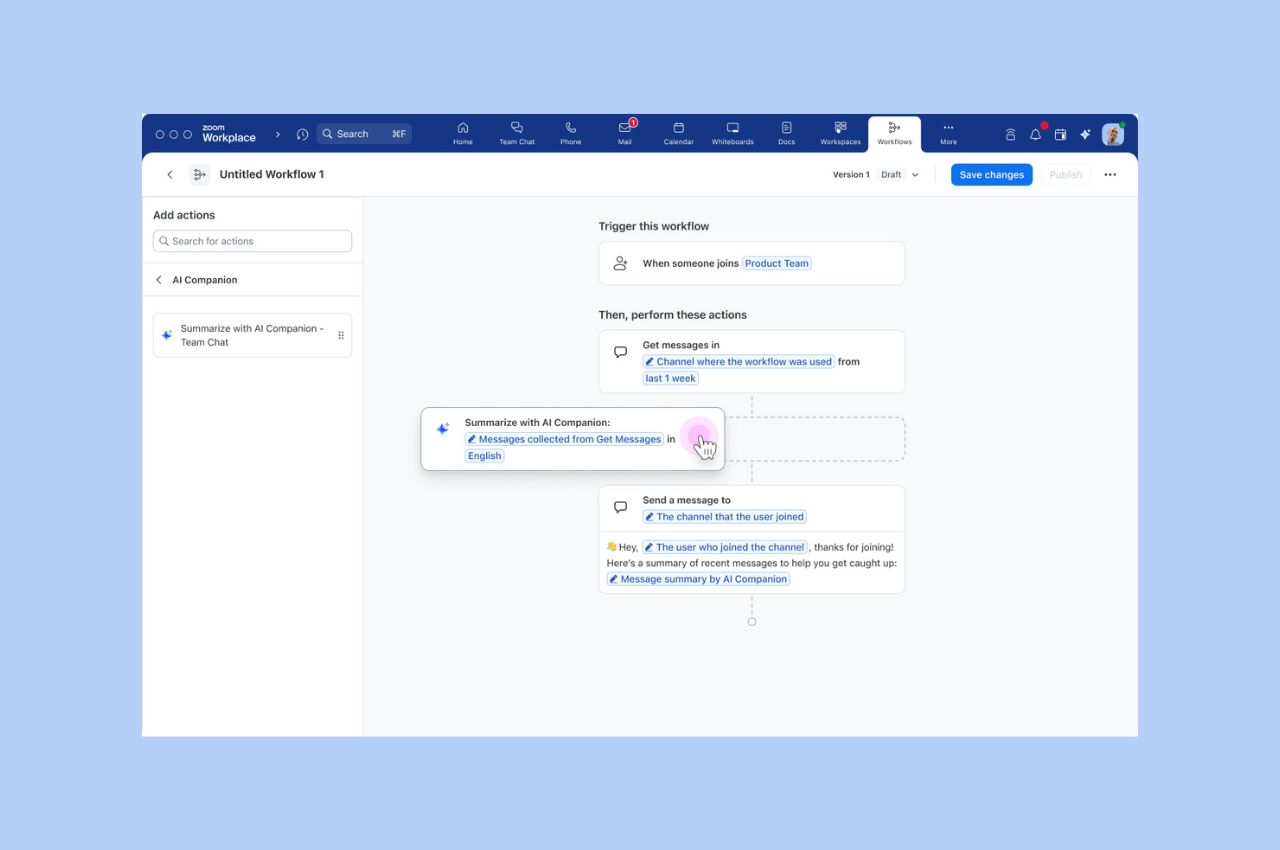
Workflow Automation tips: Save your team hours with automated workflows for common tasks
Zoom Workflow Automation allows you to create automated workflows for common tasks like responding to chat messages, helping your team save time.
Updated on April 26, 2022
Published on December 17, 2020


If you feel like most of your time is taken up by meetings, you’re not alone. According to meeting scientist Joseph Allen, Ph.D., managers spent 75% of their pre-pandemic workday preparing for, organizing, and attending meetings — yet more than half of meetings are rated as poor.
When they’re purposeful, planned, and well-run, meetings can be a powerful tool, but too often they’re seen as unproductive or unnecessary. So why do we keep having bad meetings? And how can we make them better?
Allen joined Nicole Baer and Philippe Depallens from Logitech to answer those questions and more at Zoomtopia 2020. Watch their “Tips on Running Mindful Meetings” session or download our handy checklist to improve your organization’s meeting culture.
Run through this quick set of questions to evaluate whether you need to meet in the first place:
If you answered yes, a meeting is likely the best format for your purpose — if not, consider whether you should use email, instant messaging, or a quick phone call instead.
Does everyone on your invite list play an active role in achieving the goal of your meeting? If the purpose is collaboration, try sticking to five to seven people — otherwise, you end up with lots of people on a call but only a few contributing.
Agendas help keep the conversation on track and make for more productive meetings. Prepare your agenda ahead of time and send it to all attendees to allow them to formulate their thoughts and get up to speed on the topic at hand.
Try to keep meetings to less than 45 minutes, and avoid scheduling meetings back to back to give people time to recover. If you need to go longer than an hour (such as a planning session), account for short breaks so folks can relax and recharge.
When your meeting reminder pops up, stop your current task and take a few minutes to prepare your mind to focus on the meeting ahead. Drink a glass of water, meditate, listen to music, or walk around — whatever gives you energy and allows you to participate without distraction.
Spending time to make a personal connection usually results in a more effective meeting. Set the right tone by chatting about the weekend or asking how people are doing before you get down to business.
Give people a reason to turn on their camera by facilitating an active conversation where everyone has a chance to speak. Encourage participation by calling people by name. Switching views frequently, going from screen sharing to gallery view to spotlight, can also help keep attendees’ attention.
Avoid multitasking or tab surfing so you can be as engaged and involved as possible. Show presenters you’re listening by using meeting reactions. If you don’t want to interrupt, share comments in the in-meeting chat.
When conversation starts to drift, engage in procedural communication to refocus on the goal at hand. Suggest tabling unrelated discussion and following up offline to keep the meeting on track.
Women and people of color tend to experience unconscious bias in the workplace, and virtual meetings can magnify these inequities. Be mindful of who’s talking and who’s being talked over, and strive to engage all voices equally.
Leverage meeting recordings, transcripts, and note-taking apps so you can send highlights to all stakeholders. That way, everyone can stay informed without spending their entire day in meetings.
When you send around the notes or recordings, ask for additional feedback or contributions. This creates a more inclusive environment for those who don’t feel as comfortable speaking up in the meeting, or for those who weren’t there.
Evaluate meetings, especially standing meetings, after each occurrence to make sure they’re still serving their intended purpose. If not, make them shorter, less frequent, or cancel them altogether.
Download our Mindful Meetings Checklist
Check out our video on-demand library for more insightful sessions from Zoomtopia 2020 on topics like education, healthcare, staying connected with Zoom, and building epic workspaces.